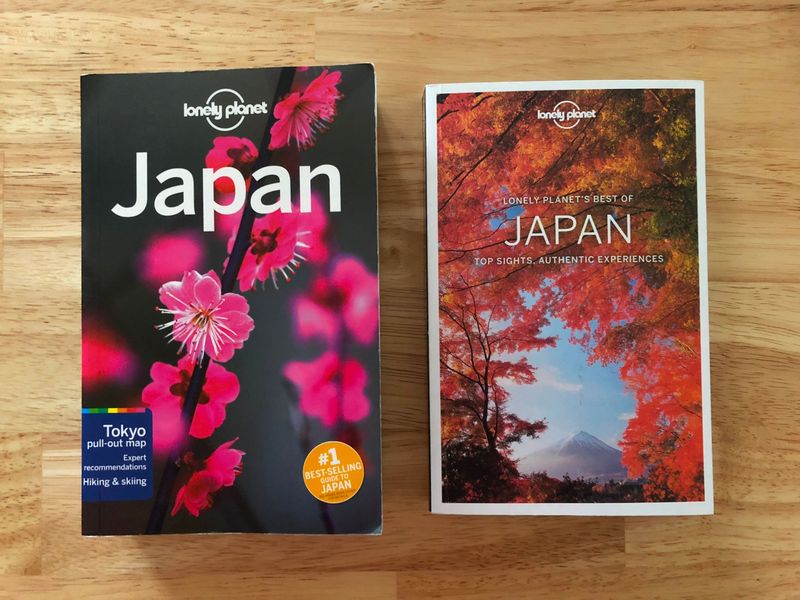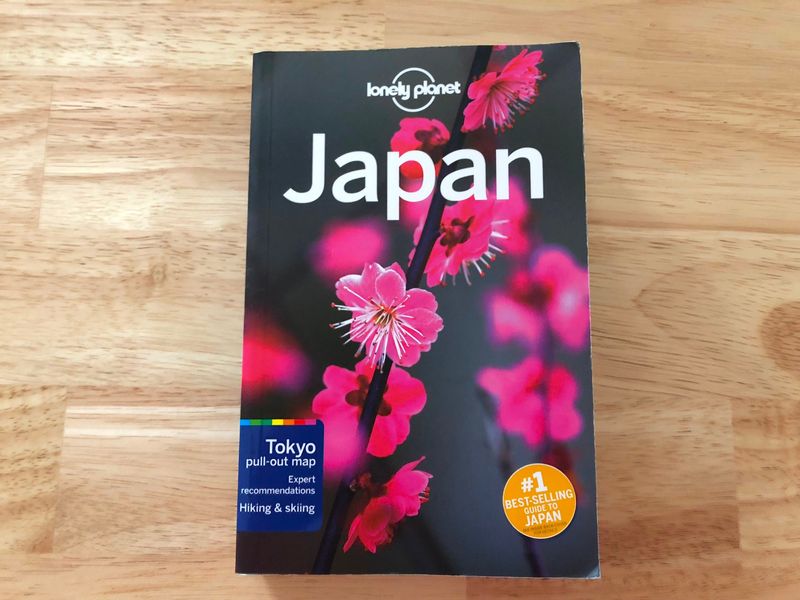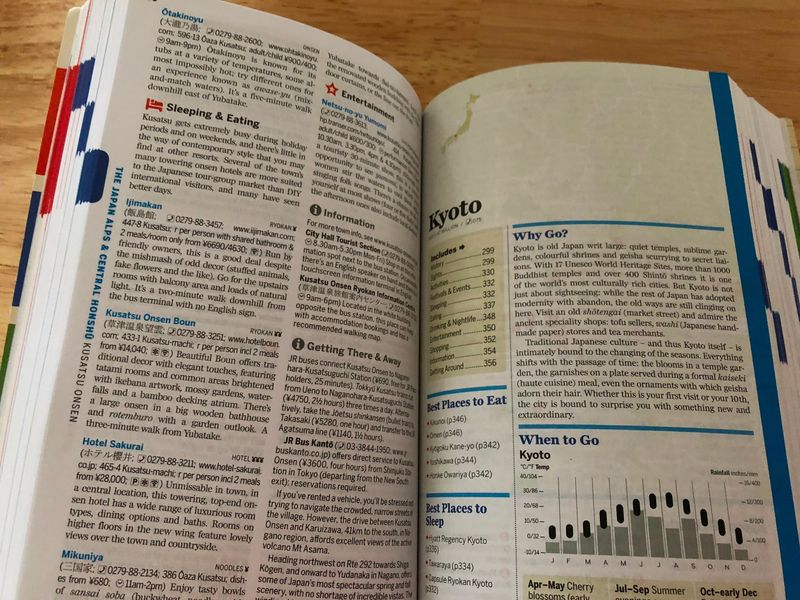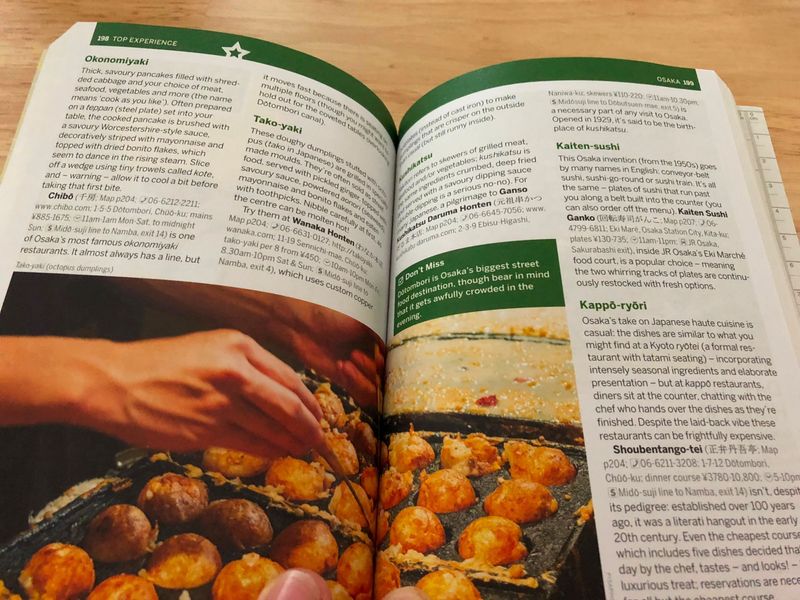Mar 21, 2018
Lonely Planet Japan guidebook delivers but “best of” falls short

I’ve long been a fan of guidebooks from Lonely Planet. Ever since I picked up a copy of the travel publisher’s “yellow bible” -- their Southeast Asia on a Shoestring guide -- a copy of a regional Lonely Planet guide has bookended each of a series of trips that spanned a backpacking phase lasting all of my 20s.
It’s mad to think that when I was traveling in those days, a guidebook really was the best of the portable sources of information available. In fact, in the backpacker cafes and bars there was always a collective nod of admiration towards those who traveled without one. These days I suppose everyone travels with a smartphone hooked up to wifi, making the humble guidebook a little redundant.
Still, I continue to enjoy having a Lonely Planet to reference every now and then so I was chuffed to get a copy of their latest guide to Japan for Christmas.

The latest Lonely Planet Japan is the 15th edition of the guide, published in August 2017. As you might expect, it’s a weighty affair clocking in at over 900 pages.
As is standard for Lonely Planet guides these days the Japan guide kicks things off with a “Top 25” which, for those who live in Japan, will offer few surprises -- Kyoto’s temples and gardens at No.1, shopping in Tokyo at No. 25. Following sections like “First Time Japan” and “What’s New” feel like cursory efforts only and certainly aren’t of any use to anyone who’s been in the country for more than a week or two. Other early sections of the guide cover themes such as food & drink, hiking, skiing, and suggested itineraries.

To be honest, these early pages of the guide will likely feel perfunctory to the seasoned Japan veteran, but for the first-timer there are words here that will surely wet the travel appetite.
For me the great pleasure of the Lonely Planet guide has always been the writing and the maps. Somehow, guide writers at LP seem to be able to invest a little of their personality into the text and even, at times, irreverence and humor. It’s much appreciated by this traveler. I like to have the sense that I’m reading the words of someone who’s been to a place, and such freedom with the writing conveys this for me.
Then there’s the maps. Actually, I think that LP’s maps have gotten harder to read over the years -- I preferred them when they were in black and white -- but the publisher has always done a stirling job at putting them together, and they’ve saved me a lot of trouble over the years. Of course, the kind of maps you’ll find in a travel guide are surely all but redundant these days. However, sat at home they still map out, for me at least, the exciting and magical possibility of travel. I could pour over them for hours, as I can the whole guide, imagining what it might be like in such and such a place.
OK, so in practical terms I have little use for a Lonely Planet guide to Japan, and it’s way too heavy to be lugging around in an era when anyone with enough time and money to go backpacking will almost certainly have a smartphone. But I’m glad to have it. As with all of the publisher’s guides, I like to reference it, flick through the pages, analyse the maps, and dip into bits of text. It’s also good for giving me a broader perspective of the travel possibilities in Japan -- I think when we have access to so much information regarding travel in the country, we can get bogged down by it all. In this regard, having my LP Japan guide kind of streamlines things.
Of course, for someone who has spent years “in country,” Lonely Planet’s writers reveal themselves, at times, to be less equipped for the job than some of their readers, and the overall futility of trying to cover a whole nation in one book becomes abundantly clear (the Okinawa section of the guide is very light, and there are many occasions when the seasoned Japan reader will be left scratching their head when a stellar location isn’t even given a mention).
It should also be mentioned at this point that Lonely Planet guides are expensive in Japan. This one was a present from back home but on these shores expect it to cost around 5,000 yen.
Still, the latest edition of LP’s guide to Japan, for this now armchair traveler, continues the publishers tradition of witty writing, savvy layouts, usability, and fun. I’m pleased to have it on the shelves.
I’m not so pleased to have the same publisher’s “Lonely Planet’s Best of Japan Top Sights, Authentic Experiences,” which just feels like a cynical exercise in squeezing out every penny from a dying market -- guidebooks (not travel in Japan).

For my sins I bought this in a moment of weakness one late Sunday afternoon when I was glum about the prospect of a week at work. In such a state dropping 4,000 yen (yes, 4,000 yen) on this book seemed like what I needed to do to take the mind off a Monday. It worked, for about five minutes.
Honestly, I don’t know why you’d buy Lonely Planet’s Best of Japan Top Sights, Authentic Experiences (other than for reasons similar to the above).
The guide, in its first edition / published Nov. 2017, covers 12 areas of Japan over the course of its 300 or so pages. Some are quite specific (Naoshima), while others are very broad (Hokkaido). Within each area, destinations are picked up and given the once over alongside plenty of nice photos. Sometimes things are more detailed, four pages of the guide’s Tokyo section are devoted to the Tokyo National Museum, for example, while Todai-ji in Nara gets the same treatment. It all seems a bit empty though -- how about just going to see for yourself, or finding all of the same information for free online?
In many ways Lonely Planet’s Best of Japan Top Sights, Authentic Experiences feels a little patronizing, like the reader is being told what to do rather than just being presented with the necessary details and left to choose what they want to do with it. I’d always thought that Lonely Planet was above lazy clickbait, “7.5 reasons you have to take your shoes off in Japan” type of content, but this book feels like they’ve run out of ideas and have followed suit.

On the plus side it does have lots of nice pictures and is far easier to handle (physically) than the full guide to Japan. Oh, and it has a handy tear out map of Tokyo, which I shall be handing to my mum and sister when they come to visit me next week.



1 Comment
genkidesu
on Mar 21
Ah, the LP guide! I had a few well-worn different ones from different countries...sometimes I feel like just seeing a LP book gives me that feeling of nostalgia. Definitely agree that travel guides that are written with humor or that feeling of relatability and connectedness are always nice (and so much easier to read than stuffy-feeling ones!) And a family visit, that's lovely! Enjoy!